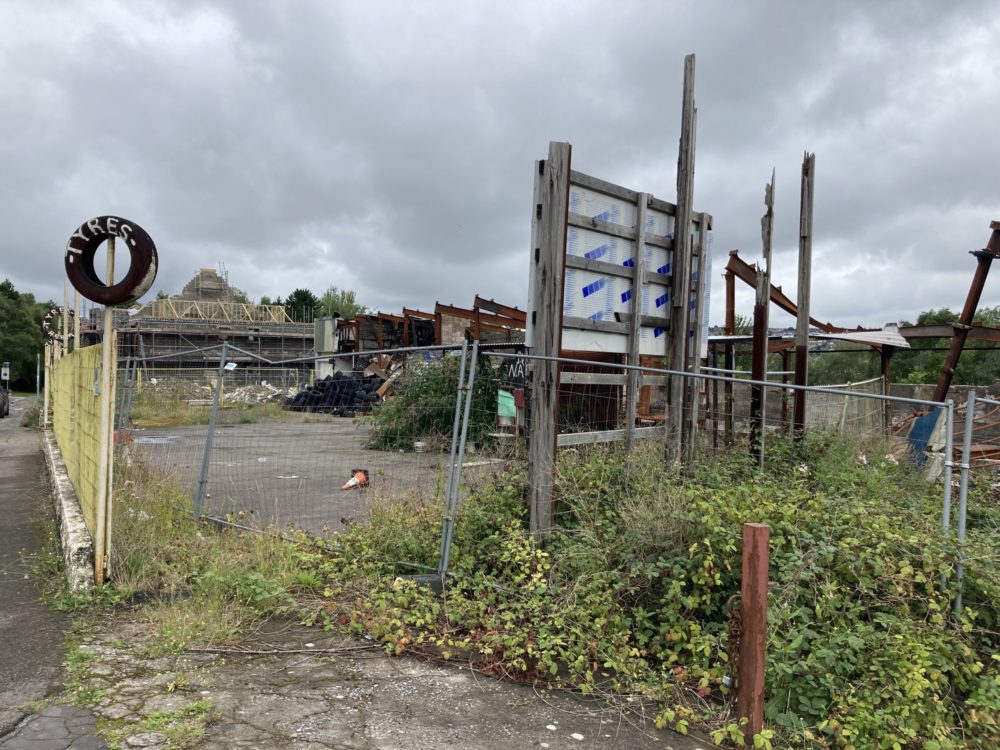Councils in Wales need to do more to regenerate brownfield land – report

Richard Youle, local democracy reporter
Councils in Wales should do more to bring brownfield land back into use to help meet housing targets, a report has found.
It said local authorities needed to be more “interventionist” and learn from one another about how best to encourage housing and other types of developments on brownfield sites and bring empty buildings back into use.
Brownfield – or previously developed – land should be used in preference to greenfield sites when available and suitable for development.
Infrastructure
The report by Audit Wales said extra costs to demolish existing buildings and clear up polluted land were barriers, making greenfield sites more attractive. But it also pointed out that brownfield sites often had infrastructure such as utilities and roads in place.
The report was discussed by a Swansea Council scrutiny panel, which cited many examples of brownfield regeneration in the county such as the transformation of the former Lower Swansea Valley industrial wasteland, the ongoing restoration of the Hafod-Morfa Copperworks, and revamps of the Palace Theatre and Albert Hall.
Empty upper floors of several city centre buildings are also being converted into flats. Public sector grants have helped offset development costs.
Cllr Chris Holley, panel convenor, said: “I think in many cases we can hold our head up high.”
Suitable sites
Audit Wales recommended councils draw up and publicise suitable brownfield sites for regeneration and identify barriers to their development, and also be more ambitious while encouraging greater input from local people.
It also recommended the Welsh Government publish a national list of brownfield sites, and monitor how many were developed compared to greenfield ones.
Audit Wales said council officers it spoke to said some brownfield sites were “undeliverable” and yet still included in their council’s local development plans (LDPs).
“Whilst we recognise the strain authorities are under, it is difficult to see why a site is included within an LDP if support to realise the site is not provided,” said the report.
It found that 13 of 18 council LDPs had targets for using brownfield land, with seven of the 13 achieving those targets. Only four of the 18 councils met their average annual requirements for new homes.
Demand for housing
The report said demand for new housing in Wales has been outstripping supply for years and pushing up prices, despite a growing population.
In 2022, a worker earning an average salary of £30,600 in Wales needed more than six times their annual earnings to afford an average home costing £190,000. The comparable figure in 1998 was three times annual earnings.
There are some things outside of Wales’s control, said the report, such as VAT being charged on repairs and alterations of empty buildings while many new construction projects were VAT-free.
Tom Evans, Swansea’s place-making and strategic planning manager, said the council was “very much attuned” to the brownfield opportunities highlighted in Audit Wales’s report.
“There is quite a programme of major brownfield sites which have been regenerated and are continuing to be so,” he said.
The service improvement, regeneration and finance scrutiny panel was told the council would assess all land within settlement boundaries, with a particular focus on brownfield land, for future potential development, and also continue to review its regeneration priorities.
Cllr Wendy Fitzgerald said brownfield redevelopment sounded fine in theory.
“In practice the single most important thing for a private developer is to make money,” she said.
This, she said, meant greenfield sites such as those being developed for housing in her Penllergaer ward ended up being built on.
“If we are going to continue to have to develop such large numbers of housing, I just can’t see it happening on brownfield sites,” said Cllr Fitzgerald.
Support our Nation today
For the price of a cup of coffee a month you can help us create an independent, not-for-profit, national news service for the people of Wales, by the people of Wales.








Perhaps a way to make owners of brownfield sites sell them at attractive prices for development would be to make it uneconomical though council tax /rates to keep them vacant, development on good farmland and floodplanes ( even if flood prevention measures for current weather conditions cannot guarantee they will not flood in the future )is getting out of control